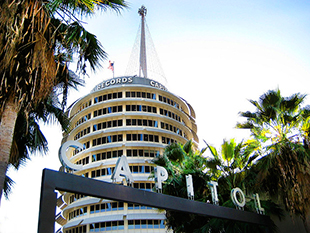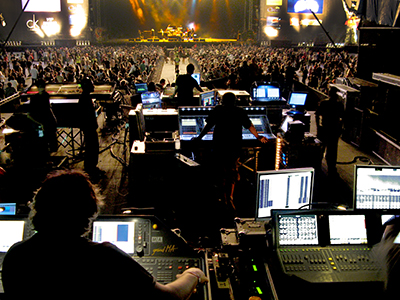![]() The world of bootlegging music has come a long way since I bought my first illegal concert cassette from a Walsall market stall. Its lousy artwork, poor recording and incorrect song titles brought their own excitement to my record collection.
The world of bootlegging music has come a long way since I bought my first illegal concert cassette from a Walsall market stall. Its lousy artwork, poor recording and incorrect song titles brought their own excitement to my record collection.
Back then, a bootleg of studio outtakes offered an insight into an artist or band that was beyond the control of a major record label, while a live recording was an open ticket to a unique live performance.
 Having originated in the historical smuggling of items in the legs of long boots, the term bootlegging was later stolen to describe the smuggling of alcohol during American Prohibition. Then it was stolen again by the music business. Alongside the mixtape, the bootleg became an iconic association for the audio cassette.
Having originated in the historical smuggling of items in the legs of long boots, the term bootlegging was later stolen to describe the smuggling of alcohol during American Prohibition. Then it was stolen again by the music business. Alongside the mixtape, the bootleg became an iconic association for the audio cassette.
Though few of the recordings were good from a sound quality point of view, bootlegs remain among some collectors’ most prized recordings.
From the recording studio, bootlegs were often premixes or final mixes made by artists, engineers and producers to review away from a session, which subsequently found wider circulation. Or they were furtively copied by a tape op when everyone else had left for the night.The best studio bootlegging opportunity I’ve witnessed is the patchbay serving the reverb chambers in Capitol Records’ famed LA studios. Here in the basement of the building, I was told, the feed from the studios’ mixing desks could be intercepted and high-quality recordings made of locked sessions.
Concert bootlegs were necessarily made from the auditorium, with equipment of varying pedigree used by people of uncertain technical ability. Or they came from the front-of-house console – as did the recording of Rory Gallagher given to me by one of his engineers.
Artists’ views of bootlegs varies considerably – while Frank Zappa was firmly opposed to his concerts being recorded by amateurs, the Grateful Dead encouraged them and even designated areas where the best recordings might be made.
 Another form of live bootleg was taken from gigs broadcast on radio and TV. Taking them from the radio was pretty simple. Taking them from a television set was not. With high voltages inside the set, the safe option was to mic the internal loudspeaker in all its lo-fi elliptical glory. In 1974, my favoured solution was Celestion’s Telefi – a hi-fi add-on that used an induction coil to listen in to the set’s IF circuitry and make it available on a pair of phono sockets. It was tricky to set up, but it did deliver 30Hz-20kHz from the BBC’s In Concert broadcasts.
Another form of live bootleg was taken from gigs broadcast on radio and TV. Taking them from the radio was pretty simple. Taking them from a television set was not. With high voltages inside the set, the safe option was to mic the internal loudspeaker in all its lo-fi elliptical glory. In 1974, my favoured solution was Celestion’s Telefi – a hi-fi add-on that used an induction coil to listen in to the set’s IF circuitry and make it available on a pair of phono sockets. It was tricky to set up, but it did deliver 30Hz-20kHz from the BBC’s In Concert broadcasts.
The digital dividend
An unexpected consequence of digital mixing consoles’ ability to offer virtual soundchecking is that high-quality recordings are now routinely made of live gigs – both stereo mixes and multitrack. In fact, the arrival of cheap multichannel audio interfaces and laptops running recording software means that an unprecedented number of gigs are now being recorded. As well as providing virtual soundchecking, this has enabled bands to more readily make ‘live’ albums, and even to release a recording to the audience as they leave the gig. Of course, many gigs involve multiple artists, third-party hire equipment, freelance mixing engineers and other vagaries. It’s unsurprising that recordings turn up as bootlegs…
Of course, many gigs involve multiple artists, third-party hire equipment, freelance mixing engineers and other vagaries. It’s unsurprising that recordings turn up as bootlegs…
Through whatever route, a number of multitrack files have ended up ‘in circulation’ and on the internet. In addition to live multitracks, people have managed to download the ‘Bohemian Rhapsody’ studio 24-track and Stevie Wonder’s ‘Superstition’ 16-track, as well as various Beatles 4-track recordings.
I’ve encountered stuff ranging from a full Aussie Pink Floyd performance to a copy of a 24-track studio tape (kick drum on track two) that dates back to before digital recording. In both cases, the source of the recordings and their subequent history was ‘unknown’.
Which invites an observation: even with the availability of such high-quality recordings, it’s live recordings taken from mobile phones – modern-day bootlegs – that now saturate YouTube. Does it serve music’s best interests that it is so heavily represented by sound that is almost invariably unlistenable? Or would it be better if it were the good stuff taken from the desk?
Last/Next Blog






